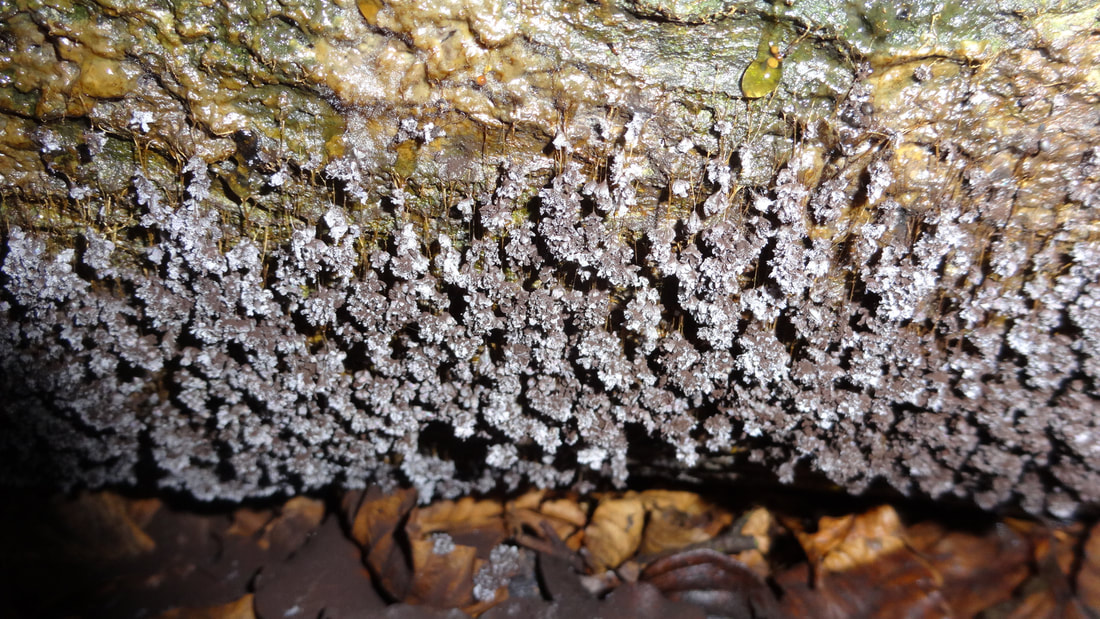|
I saw my first slime mould a couple of years ago at Park Wood near Huntercombe in Oxfordshire. It was bright yellow and covered the lower bit of an old log with a beautiful web of colour. I took a lot of photos and when I got home and looked it up, I found that it was called Badhamia utricularis and that it was a common slime mould. I also found out that slime is neither a plant or a fungus but a plasmodium that can move to seek food, leaving trails of slime as it goes along that disappear after it has found its new location. Above you can see half of a Jelly Rot fungus (Phlebia tremellosa) being devoured. The slime will move up and totally consume the rest before the day is out. The slime trails are fascinating too. Below is another view of the slime having a feast on Jelly Rot (Phlebia tremellosa) and Hairy Curtain Crust (Stereum hirsutum) which it favours. Below is Badhamia utricularis feasting on some more Hairy Curtain Crust (Stereum hirsutum). When ready, the slime will coalesce to form balls. Eventually the balls will hang in bunches on skinny yellow strings. The yellow balls gradually turn darker. Then they become almost black with greyish tinges. Some people think they look like bunches of grapes, though not very appetising! There can be literally thousands of these black balls. The black balls gradually turn grey and flooffy as they become ready to release their spores. The slightest breeze will disperse the spores to all corners of the woodland, leaving just the strings which quickly disappear. Finally, it looks as if nothing had ever been there. 
0 Comments
Your comment will be posted after it is approved.
Leave a Reply. |
Archives
March 2023
Categories
All
|














 RSS Feed
RSS Feed